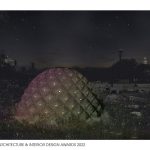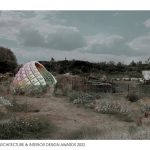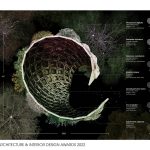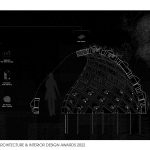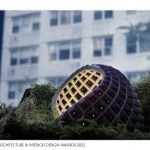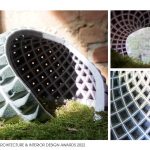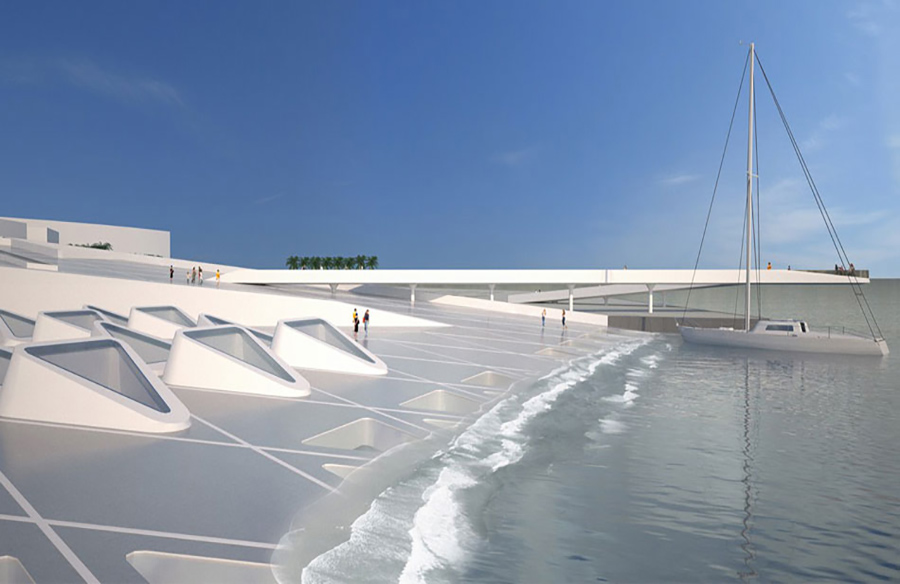An insect apocalypse is dramatic for its cataclysmic effect in eradicating the foundations of the planetary food web. New preserves for biodiversity are urgent in light of the “biological annihilation” of species that characterises the current sixth mass extinction, according to the Proceedings of the National Academy of Sciences.. How can we build habitat for the pollinating insects that are foundational to our food production?
Global Design & Architecture Design Awards 2022
First Award | Pop-Ups and Temporary (Concept)

| Project Details | |
| Project Name: | Hempcrete Habitat |
| Studio Name: | Harrison Atelier |
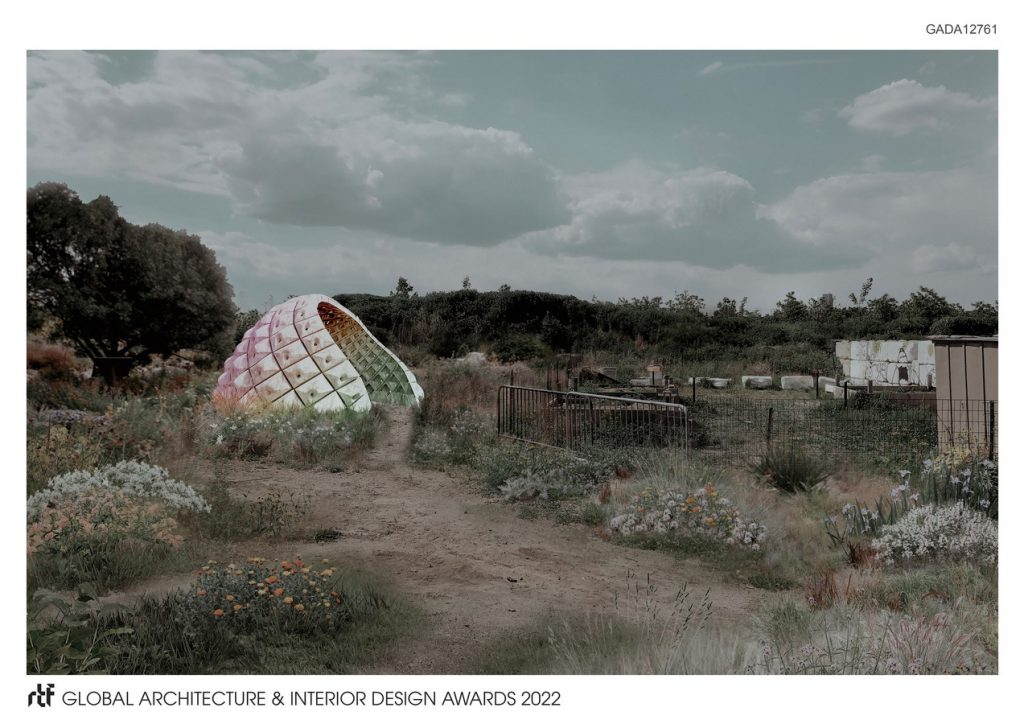
©Harrison Atelier
The term “pollinator” tends to invoke the charismatic honeybee, whose social organization, elaborate hives and honey-making dominate the anthropcentric understanding of bees. This popular view hardly considers the diversity of native bees, whose color and size vary from blue orchard bees, to tiny sweat bees and furry bumbling carpenter bees. The mason bee does the pollinating work of 100 honeybees, yet produces neither hive nor honey. The majority of native bees are considered “solitary,” that is, they lay eggs in burrows and tunnels underground. Cavity- dwelling solitary bees make discreet and opportunistic nests in abandoned burrows, holes and reeds: varied habitats that are hard to identify but easy to eradicate. Much remains unknown about the 4,000 species of native bees in America, despite their importance as the pollinators for 70% of the non-agricultural environment. Monitoring these insects is a vital step in addressing the gap in scientific data on native pollinators.
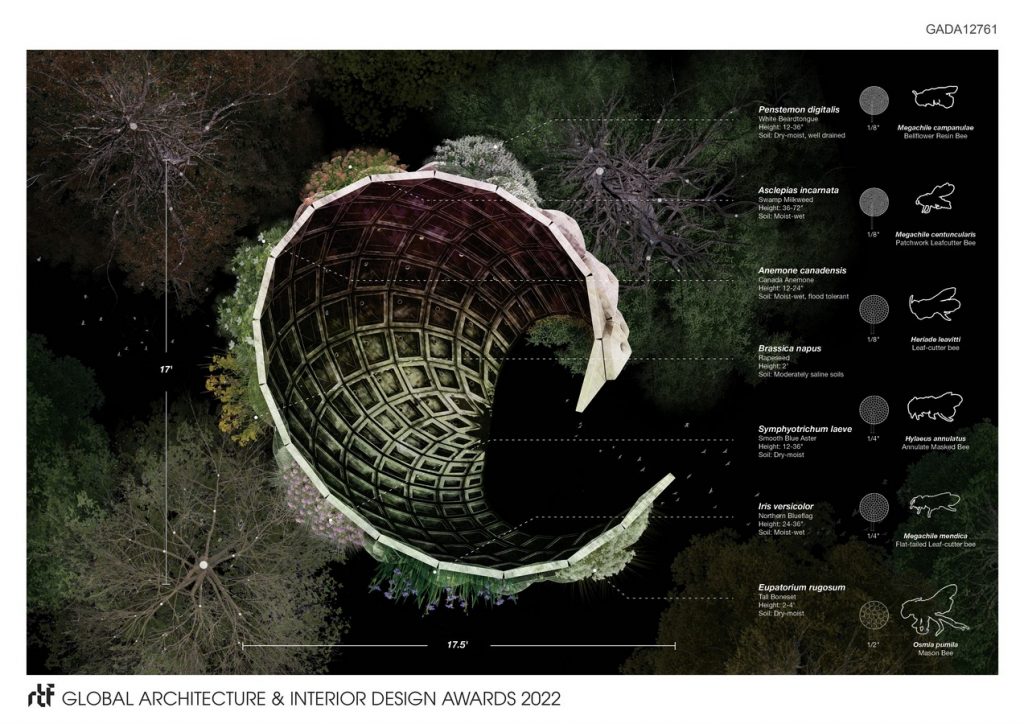
©Harrison Atelier
The Hempcrete Habitat proposes an analogous habitat, monitoring station, and visitors’ center on Governors Island. In section, the pavilion offers a vertical ecology with nesting tubes for bees at its lowest rungs, plants and water catchment above and finally solar panels at the top; this off- the-grid system powers the cameras and microprocessors that comprise the data-gathering components of the pavilion. Images of native bees harvested by the embedded cameras feed a database trained to automate insect identification with the support of Microsoft’s AI for Earth program.The pavilion’s hempcrete drawers are slotted within a wood scaffold and contain nesting tubes for solitary bees and a solar-powered Arduino-based monitoring platform.
The diverse micro-conditions that we develop with our pavilion’s novel paneling system provide artificial nesting structures for solitary bees and models environmental stewardship in our Anthropocene age. Cited alongside The Bee Conservancy at Governors Island’s Urban Farm, the Hempcrete Habitat scaffolds biodiversity in providing a constructed habitat while simultaneously bringing visibility to these vital native pollinators. This prototype seeks to address the urban opportunity provided by NYC Department’s Local Laws 92 /94 of 2019, mandating “that all new buildings and alterations of existing buildings where the entire existing roof deck or roof assembly is being replaced must provide a sustainable roofing zone covering 100% of the roof,” a radically environmental vision for a present day scarred by mass extinction, climate urgency, pandemic and social crisis.
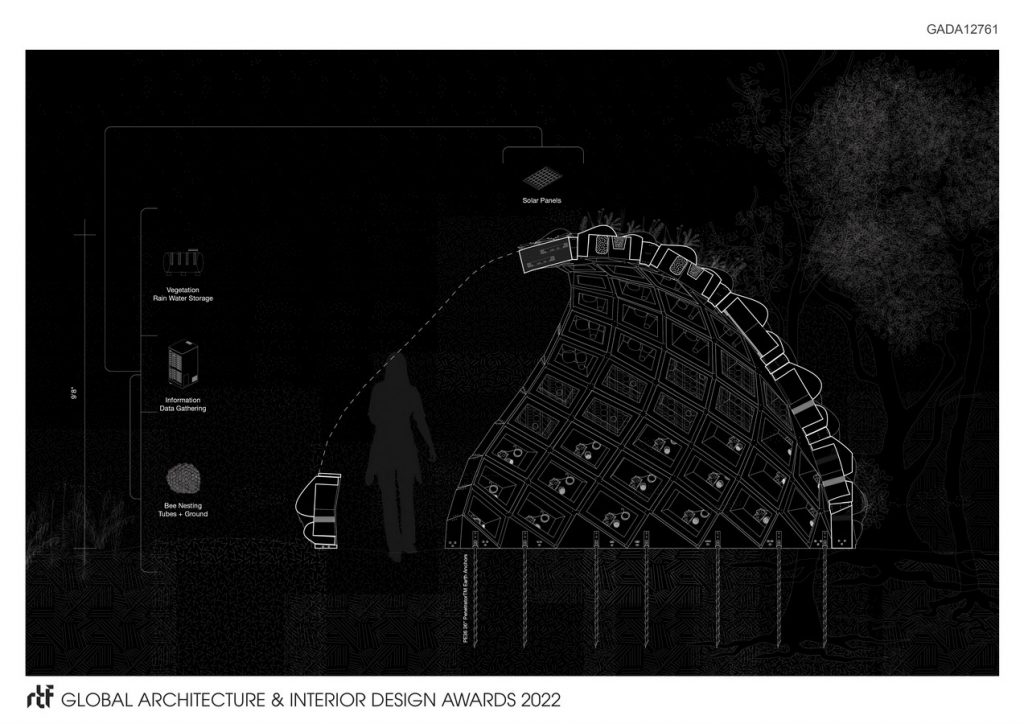
©Harrison Atelier
Feral Rooftops envisages green roofs as open air reserves of native plants and pollinators, with constellations of field stations that, while monitoring each biodiverse surface, assemble and relay air quality and storm-water sequestration data for NYC’s contribution to what French landscape philosopher Gilles Clement describes as the “planetary garden.”
- ©Harrison Atelier
- ©Harrison Atelier
- ©Harrison Atelier
